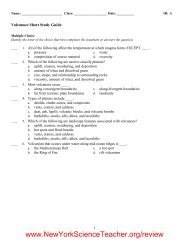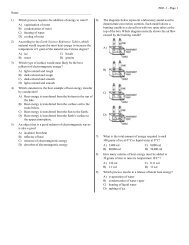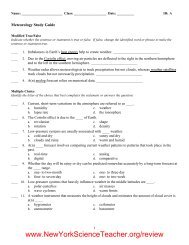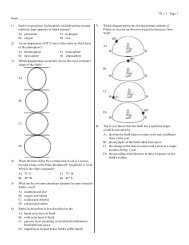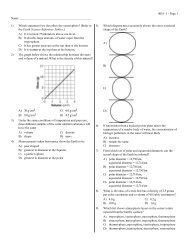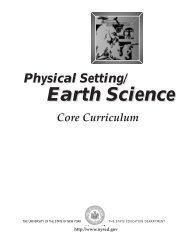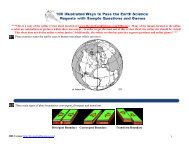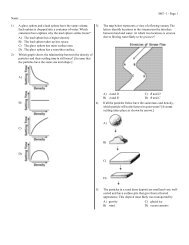physical setting earth science
physical setting earth science
physical setting earth science
Create successful ePaper yourself
Turn your PDF publications into a flip-book with our unique Google optimized e-Paper software.
Base your answers to questions 24 and 25 on the cross-sectional view of Earth below, which shows seismicwaves traveling from the focus of an <strong>earth</strong>quake. Points A and B are locations on Earth’s surface.Earthquake focusP- and S-wavesreceived hereAP- and S-wavesreceived hereOuter coreInnerCoreShadow zoneNo waves receivedShadow zoneNo waves receivedBOnly one type ofwave received here24 Which statement best explains why only one typeof seismic wave was recorded at location B?(1) S-waves cannot travel through the liquidouter core.(2) S-waves cannot travel through the liquidinner core.(3) P-waves cannot travel through the solid outercore.(4) P-waves cannot travel through the solid innercore.25 A seismic station located at point A is 5400 kilometersaway from the epicenter of the <strong>earth</strong>quake.If the arrival time for the P-wave atpoint A was 2:00 p.m., the arrival time for theS-wave at point A was approximately(1) 1:53 p.m. (3) 2:09 p.m.(2) 2:07 p.m. (4) 2:16 p.m.P.S./E. Sci.–Jan. ’06 [5] [OVER]



